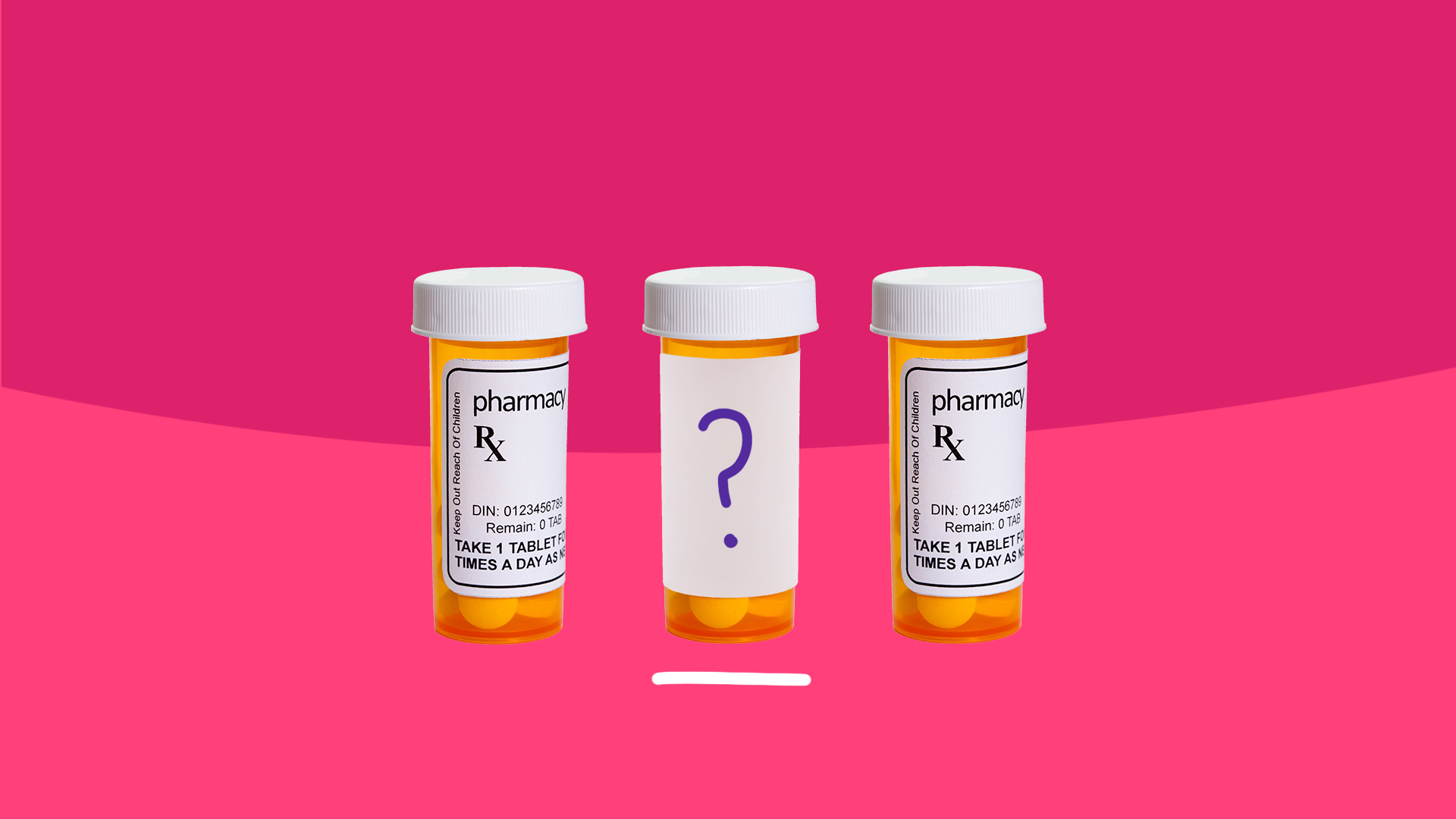What is levofloxacin? | Uses | Side effects | Dosages | Warnings | Interactions | Alternatives
What do some lung, kidney, and sinus infections have in common? When certain bacteria cause these infections, a healthcare provider may prescribe an antibiotic called levofloxacin. Bacteria come in all shapes and sizes, and they interact with the body in various ways, causing everything from minor illnesses to severe conditions. That’s why antibiotics like levofloxacin are often prescribed. Levofloxacin can fight certain bacteria in just about any part of the body, making it a useful addition to any healthcare provider‘s antibiotic toolbox.
But levofloxacin isn’t a miracle cure-all—it’s a complex medication with possible drug interactions and potentially serious side effects. There’s a lot beneath the surface here. Continue reading this medication guide to learn more about levofloxacin and how it’s used.
What is levofloxacin?
Levofloxacin is an antibiotic used to treat various bacterial infections, such as those in the lungs, urinary tract, kidneys, sinuses, and skin. Healthcare providers often prescribe it to treat pneumonia, sinusitis, bronchitis, or prostatitis, for example.
Levofloxacin is a multipurpose antibiotic that comes in various forms. Healthcare providers might use “oral, intravenous, or ophthalmic formulations to treat bacterial infections of multiple different organ systems,” according to Justin Friedlander, MD, a urologist for the Einstein Healthcare Network.
Levofloxacin is a generic prescription antibiotic that is part of a group of antibiotics called fluoroquinolones, which block enzymes necessary for bacterial growth. Levaquin is the brand-name version produced by Janssen Pharmaceuticals; however, Levaquin has been discontinued. Levofloxacin only works on bacteria, not viruses, so levofloxacin isn’t effective for the common cold, the flu, or other viral infections (such as coronavirus, or COVID-19).
While it’s a particularly effective antibiotic, levofloxacin may cause some potentially dangerous side effects, so it’s not available over the counter. It’s only available via prescription so that a healthcare provider can evaluate the appropriate conditions and circumstances for its use.
RELATED: Antibiotics 101: What are they and why do we need them?
What is levofloxacin used for?
There’s many different types of bacteria, and levofloxacin is effective against many of them, including E. coli, S. aureus, and S. pneumoniae. Levofloxacin, in addition to moxifloxacin and gemifloxacin, is commonly called a respiratory fluoroquinolone because of its efficacy against S. pneumoniae, a bacteria that attacks the lungs and airways.
Levofloxacin is often prescribed to treat:
- Acute worsening (exacerbation) of chronic bronchitis
- Bacterial pneumonia
- Complicated and uncomplicated urinary tract infections
- Kidney infections (such as pyelonephritis)
- Prostate infections
- Skin infections
- Sinus infections
Levofloxacin is also approved to treat plague, post-exposure anthrax, and bacterial infections of the eye. Plus, it has shown effectiveness in treating certain sexually transmitted diseases, specifically chlamydia.
Levofloxacin may cause serious side effects and should only be reserved for certain conditions, such as sinusitis, bronchitis, and uncomplicated urinary tract infections, when there are no alternative treatment options available.
RELATED: What is levofloxacin?
What are the side effects of levofloxacin?
Levofloxacin is a powerful antibiotic that may cause some side effects. However, people who follow a healthcare professional’s medical advice and report any concerns immediately are unlikely to experience serious side effects. Levofloxacin‘s most common side effects include the following:
- Nausea
- Diarrhea
- Constipation
- Headache
- Dizziness
- Trouble sleeping
These types of side effects frequently appear on labels for a wide variety of medications. But, unfortunately, other side effects are possible. In the past few years, levofloxacin has been under the media microscope for some of its rarer, more severe side effects.
Serious side effects and complications
Levofloxacin use has been linked to tendonitis (swelling of the tendons) and tendon rupture. These adverse effects may include symptoms such as bruising, tearing, and an inability to move the tendon area. Tendinitis and tendon rupture are most commonly in the Achilles tendon located at the back of the ankle, although they can also be experienced in the shoulder, hands, and other tendon areas. People who are over the age of 60, taking corticosteroid drugs, or have a history of kidney, lung, or heart transplants may be at an increased risk of tendonitis or tendon rupture while taking levofloxacin.
There’s also a chance that levofloxacin can cause nerve damage (peripheral neuropathy) in the arms, legs, hands, and feet, which manifests as pain, weakness, burning, tingling, or numbness. Central nervous system (CNS) effects like seizures, lightheadedness, tremors, confusion, hallucinations, and severe headaches are possible serious side effects of levofloxacin.
Levofloxacin may cause serious heart problems, such as QT prolongation and torsades de pointes. These heart rhythm problems may be characterized by a fast or irregular heartbeat.
Some people who take levofloxacin may also experience a greater sensitivity to sunlight, leading to severe sunburn, blisters, and skin rashes after just a short time in the sun. While taking levofloxacin, avoid the sun (and tanning beds) if possible. If you are in the sun for a short period of time, wear sunscreen and clothes that cover the skin.
Levofloxacin may also cause liver problems characterized by dark urine, vomiting, stomach pain, light-colored stool, and yellowing of the skin or whites of the eyes.
Anyone who has the relatively rare condition myasthenia gravis might see their symptoms worsen with levofloxacin treatment. These symptoms include muscle weakness, drooping eyelids, difficulty swallowing, and blurred or double vision.
In some people, levofloxacin may trigger an allergic reaction that consists of rash, hives, swelling, itching, and—in the worst case—anaphylaxis.
Other serious side effects of levofloxacin include aortic aneurysms, intestinal infections, joint problems, and changes in blood sugar levels. Before taking levofloxacin, tell your healthcare provider if you have a history of any medical conditions, including heart problems, joint problems, and diabetes.
Side effects, whether common or more serious, “can occur hours to weeks after exposure and may potentially be permanent,” says Dr. Friedlander, citing a 2016 FDA warning.
That’s a pretty robust list of potential adverse effects, and it might seem intimidating, but remember that these are pretty uncommon. It’s just good to keep them in mind, especially for anyone with pre-existing conditions that could be worsened with levofloxacin treatment.
Levofloxacin dosage
A typical levofloxacin dosage is 250, 500, or 750 mg every 24 hours for five to 10 days. Levofloxacin can be administered to adults and children weighing 30 kg (~66 lbs) or more with functioning kidneys. The actual dosage may vary based on the type of infection treated, administration route, patient’s age, weight, and other medications.
As a relatively strong antibiotic, levofloxacin may start improving symptoms within a few days. However, the full course of antibiotics should be taken as prescribed by your healthcare provider, even if you feel better sooner than expected.
Below are the dosages recommended by the Food and Drug Administration (FDA) for adults with normal renal function. Doses are given once every 24 hours.
| Diagnosis | Standard Dosage |
| Nosocomial pneumonia | 750 mg daily for 7-14 days |
| Community-acquired pneumonia | 500 mg daily for 7-14 days OR 750 mg daily for 5 days (depending on the underlying bacteria) |
| Acute exacerbation of chronic bronchitis | 500 mg daily for 7 days |
| Acute bacterial sinusitis (sinus infection) | 750 mg daily for 5 days OR 500 mg daily for 10-14 days |
| Chronic bacterial prostatitis (prostate infection) | 500 mg daily for 28 days |
| Complicated UTI | 750 mg daily for 5 days OR 250 mg daily for 10 days (depending on the underlying bacteria) |
| Uncomplicated UTI | 250 mg daily for 3 days |
| Complicated skin infection | 750 mg daily for 7-14 days |
| Uncomplicated skin infection | 500 mg daily for 7-10 days |
| Anthrax | 500 mg daily for 60 days (varies based on the age and weight of the patient) |
| Plague | 500 mg daily for 10-14 days (varies based on the age and weight of the patient) |
RELATED: Levofloxacin dosage, forms, and strengths
Levofloxacin warnings
Women who are pregnant or breastfeeding should consult their healthcare provider before taking levofloxacin. There haven’t been any adequate or well-controlled studies on the effects of levofloxacin in pregnant women. Levofloxacin passes into breast milk; however, the effects of levofloxacin from breast milk aren’t clearly defined. Mothers who are lactating may consider pumping and discarding breast milk during treatment with levofloxacin and for an additional two days after the last dose.
Older people (65 or older) may take levofloxacin, although the antibiotic may remain in their system longer due to reduced kidney function. For older people, healthcare providers may modify the dosage of levofloxacin. Older patients are at an increased risk of heart problems, liver problems, and tendon problems while taking levofloxacin.
Levofloxacin has not been FDA-approved for children younger than 18 years of age except in cases of inhalational anthrax or plague due to potential side effects. Levofloxacin should not be administered to children weighing less than 30 kg (~66 lbs).
Levofloxacin interactions
Although it’s occasionally used in combination therapy, levofloxacin shouldn’t be taken alongside certain drugs due to potential drug interactions. Do not take levofloxacin simultaneously with:
- Antacids, metal cations (like iron, magnesium, zinc, and aluminum), multivitamins, and Carafate (sucralfate): These drugs can block the absorption of levofloxacin into the blood. Levofloxacin should be taken at least two hours before or after using these other medications.
- Videx (didanosine): This HIV medication can also prevent levofloxacin‘s gastrointestinal absorption. Levofloxacin should be taken at least two hours before or after using this medication.
- Coumadin (warfarin): Levofloxacin can elevate warfarin’s effects, increasing the risk of bleeding.
- Antidiabetic agents: Taking levofloxacin with an antidiabetic agent can lead to an increased risk of changes in blood sugar levels. Blood sugar levels may need to be monitored when taking levofloxacin with antidiabetic agents, such as metformin.
- Nonsteroidal anti-inflammatory drugs (NSAIDs): Pain relievers like ibuprofen or aspirin may increase the risk of CNS side effects, including seizures.
These are the most common drug interactions, but other drug interactions are possible. Patients should inform their prescribing healthcare provider about other medications they’re taking.
Has Levaquin been discontinued?
Yes. In December 2017, Janssen Pharmaceuticals pulled Levaquin, the brand name of levofloxacin, and Floxin Otic, the brand name of ofloxacin ear drops, from production. Janssen said that it decided to discontinue Levaquin due to the broad availability of alternative antibiotics. However, there were several lawsuits over severe side effects caused by the antibiotic. These lawsuits came from Levaquin patients who experienced serious side effects, primarily aortic aneurysms and tendon ruptures, after taking the drug and claimed that Janssen Pharmaceuticals marketed the drug despite its potentially dangerous side effects.
Prior to these lawsuits, the FDA had issued a black box warning for severe adverse effects linked to Levaquin, Cipro, Avalox, and other fluoroquinolones. A black box warning is the most serious type of warning the FDA will issue before completely banning a medication.
Are there alternatives to levofloxacin?
Levofloxacin may have been discontinued, but it isn’t the only fluoroquinolone antibiotic out there. In fact, there are other prescription antibiotics that can treat a similar scope of infections. Healthcare providers have multiple treatment options for common bacterial infections. The generic version of the drug, levofloxacin, is still prescribed and widely available. The most frequently-used levofloxacin alternatives include:
- Cipro (ciprofloxacin): This is one of levofloxacin‘s most common alternatives. As fluoroquinolones, levofloxacin and ciprofloxacin treat many of the same conditions and cause similar side effects (both common and serious). Healthcare providers may also use Cipro to treat typhoid fever and certain forms of gonorrhea.
- Avelox (moxifloxacin): Avelox is another fluoroquinolone that’s fairly similar to levofloxacin. Both drugs can treat a variety of bacterial infections. Avelox is a brand-name drug available in a generic form called moxifloxacin.
- Bactrim (sulfamethoxazole/trimethoprim): Bactrim is a brand-name antibiotic used to treat ear infections, UTIs, traveler’s diarrhea, chronic bronchitis, and certain types of pneumonia. It is similarly effective to levofloxacin for certain infections. However, it contains sulfamethoxazole, a sulfa drug, and trimethoprim, a folic acid inhibitor. While it doesn’t pose the same risk of tendonitis as levofloxacin, Bactrim carries an increased risk of severe skin reactions. People with a sulfa allergy should not take Bactrim.
- Zithromax (azithromycin): This is another antibiotic from a different drug class, called macrolide antibiotics. Zithromax, also known as Z-Pak, is often prescribed to treat ear infections, respiratory tract infections, sexually transmitted infections, and other bacterial infections. Zithromax is the brand name for azithromycin. It may cause serious side effects such as liver problems and heart rhythm problems, but it is not associated with tendon problems.
- Keflex (cephalexin): Keflex is a brand-name antibiotic that can be prescribed for some of the same infections as levofloxacin, such as respiratory tract infections and urinary tract infections. However, Keflex can also treat bone infections. Cephalexin is the generic name of Keflex, and it is part of a class of drugs called cephalosporins.
Your prescribing doctor can help you decide which levofloxacin alternative is best for you based on the infection being treated, your age, pre-existing conditions, and other factors. A SingleCare discount card may help you save on your next prescription at your local pharmacy.











